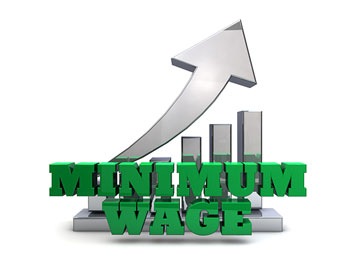

The Minimum Wage Hike
California’s minimum wage went up to $20/hr. for fast food restaurants with at least 60 locations nationwide that do not make bread. This law is causing widespread unintended consequences. For example, Fosters Freeze in Lemoore closed suddenly after the wage hike. Mod 5 Pizza is closing five locations. There are widespread price increases including at In n Out, Burger King and more. Significant layoffs are also occurring at restaurants like Pizza Hut, Round Table Pizza, and Auntie Anne’s as companies determine how to deal with the wage hikes while maintaining profit levels. Some franchise owners are “on the move” to states with less regulation such as Nevada. It will also negatively impact manufacturing and supply chain as companies compete for resources and increase prices. The Skills Gap and misalignment of high-skilled and low-skilled jobs will worsen.
More Shortages & Sky High Prices…..NOT Chocolate!
The price of cocoa has doubled in the last year. After three years of poor cocoa harvests with a weak outlook, the supply of cocoa has been slashed. Thus, prices are escalating and shortages are becoming widespread. Processing plants are saying they cannot afford to purchase the beans. For example, 60% of the world’s coca is produced in Africa’s the Ivory Coast and Ghana, and these plants have stopped or cut processing. Unfortunately, there is a massive misalignment of demand and supply which is creating supply chain shortages and causing inflationary pressures. In addition, substitutes are starting to occur. To read more about persistent shortages, see our article, “Supply Chain Shortages Remain a Concern“.
Egg Inflation
The largest producer of fresh eggs, Cal-Maine Foods, Inc. temporarily shut down one of its facilities due to the bird flu. It also resulted in the depopulation of 1.6 million hens. These issues are bound to lead to further price increases. Egg prices increased over 8% in the last month, have more than doubled since before the pandemic, and are bound to go even higher as potential shortages loom. What is the bottom line? Supply and demand misalignment is creating havoc throughout the supply chain.
It Isn’t All About Food
Oil and gas prices are increasing again, which will have an impact on countless products from medical devices to electronics and industrial machinery. Since the supply chain has been thrust into chaos throughout the world (listen to our recent Supply Chain Chats on what’s going on in the global supply chain), container shipping rates are increasing. And after the recent bridge collapse in Baltimore, the automobile supply chains have been disrupted, and it is likely to lead to inflationary pressures. No matter the product, supply chain risks have been heightened.
How to Navigate
Unfortunately, there is no easy answer and magic wand to resolve the shortages and realign demand with supply. On the other hand, the focus of SIOP (Sales Inventory Operations Planning) is to align demand with supply and provide the visibility and insights to proactively navigate these rough waters. For example, clients are reallocating capacity among production facilities, making make vs buy decisions, offloading to supplement short-term spikes in demand, and maximizing customer and product profitability with a SIOP process. To learn more about these strategies, download our complimentary book, SIOP: Creating Predictable Revenue and EBITDA Growth.
In addition, there is no doubt the proactive clients are finding ways to leverage ERP systems and advanced technologies to automate, digitize and better navigate these trying circumstances. For example, a healthcare products manufacturer is using artificial intelligence and robotics to produce standard product with minimal resources so that they can dedicate their high-skilled talent to their complex product lines supporting aerospace and defense. Another client is pursuing additive manufacturing/ 3D printing to get a leg up on the competition and bring down lead times to support growth plans. There is plenty of opportunities if you look for them!
If you are interested in reading more on this topic:
How Do You Rate in Your Supply Chain?


